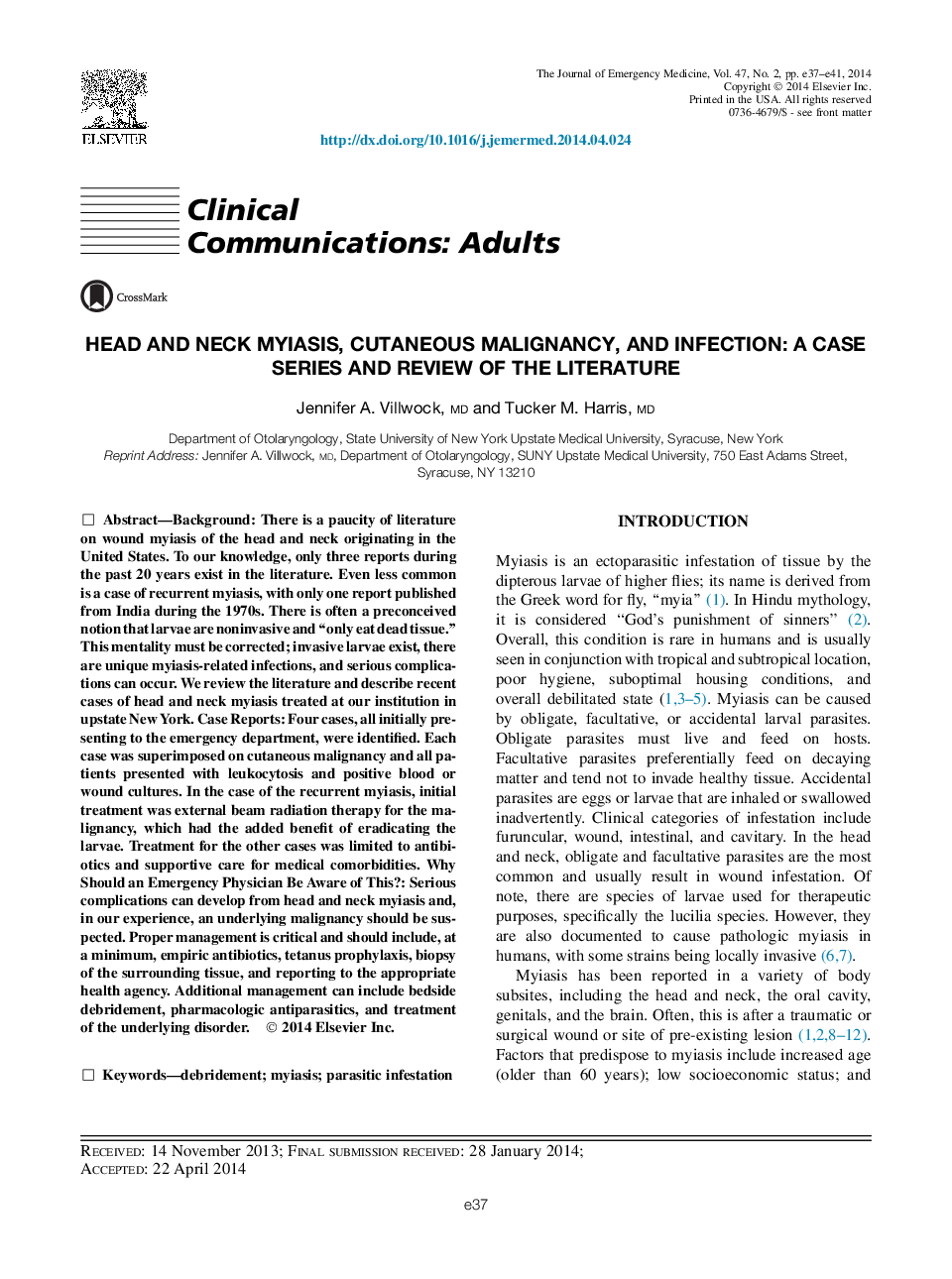| Article ID | Journal | Published Year | Pages | File Type |
|---|---|---|---|---|
| 3247124 | The Journal of Emergency Medicine | 2014 | 5 Pages |
BackgroundThere is a paucity of literature on wound myiasis of the head and neck originating in the United States. To our knowledge, only three reports during the past 20 years exist in the literature. Even less common is a case of recurrent myiasis, with only one report published from India during the 1970s. There is often a preconceived notion that larvae are noninvasive and “only eat dead tissue.” This mentality must be corrected; invasive larvae exist, there are unique myiasis-related infections, and serious complications can occur. We review the literature and describe recent cases of head and neck myiasis treated at our institution in upstate New York.Case ReportsFour cases, all initially presenting to the emergency department, were identified. Each case was superimposed on cutaneous malignancy and all patients presented with leukocytosis and positive blood or wound cultures. In the case of the recurrent myiasis, initial treatment was external beam radiation therapy for the malignancy, which had the added benefit of eradicating the larvae. Treatment for the other cases was limited to antibiotics and supportive care for medical comorbidities.Why Should an Emergency Physician Be Aware of This?Serious complications can develop from head and neck myiasis and, in our experience, an underlying malignancy should be suspected. Proper management is critical and should include, at a minimum, empiric antibiotics, tetanus prophylaxis, biopsy of the surrounding tissue, and reporting to the appropriate health agency. Additional management can include bedside debridement, pharmacologic antiparasitics, and treatment of the underlying disorder.
